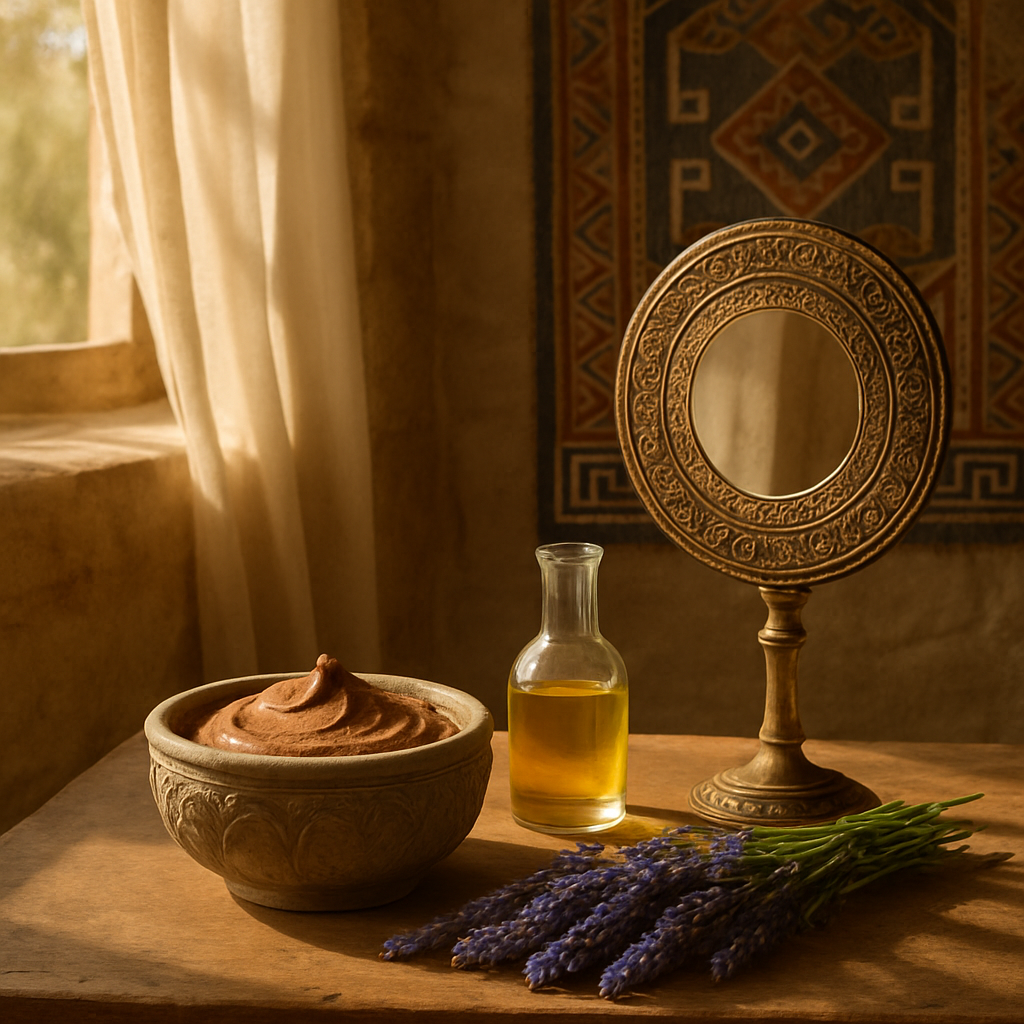
Long before beauty was bottled and sold on store shelves, ancient civilizations reveled in rituals and secrets that might seem exotic today. These were not mere routines but profound practices deeply embedded in their cultures. And while we might not be grinding minerals or bathing in oils by candlelight anymore, it’s fascinating how these age-old traditions still whisper their wisdom into our modern practices.
The allure of ancient beauty secrets isn’t just about nostalgia; it’s about a connection to human history. These rituals remind us that beauty and self-care have been part of the human experience for millennia. They offer a lens into how different cultures perceived beauty, health, and well-being. But do these ancient practices hold any relevance in our lives today, or are they merely romanticized stories of the past?
Ancient Egypt’s Beauty Legacy
Egyptian queens and pharaohs were masters of beauty. Who doesn’t remember Cleopatra’s iconic kohl-lined eyes? But Cleopatra’s beauty routine went beyond her cat-eye flick. She was known for her celebrated milk and honey baths. The lactic acid in milk is a natural exfoliant, which, paired with honey’s moisturizing properties, made these baths a luxurious skin treat. According to ancient texts, Cleopatra believed these baths kept her skin soft and youthful. Today, the idea of using natural acids for exfoliation has made a strong comeback in skincare. Products boasting lactic acid can be found in chic minimalist bottles on countless bathroom shelves.
And then there’s the story of Nefertiti, whose name means “the beautiful one has come.” Her beauty secrets weren’t just about aesthetics; they were deeply spiritual. The Egyptians used oils and unguents made from herbs and flowers, not only for beautification but also as offerings to the gods. Aromatic oils like myrrh and frankincense were prized for their scent and their spiritual significance. Some modern aromatherapists draw inspiration from these practices, suggesting that scent can be a powerful tool for emotional and physical well-being.
I once tried a homemade face mask inspired by Nefertiti’s practices: a simple mix of honey, olive oil, and a drop of frankincense essential oil. I felt like I was part of something timeless, even though I might have looked a bit silly with my sticky face. Whether it made me look like a queen is debatable, but it did leave my skin feeling nourished.
Greek and Roman Elegance
The Greeks and Romans had their fair share of beauty secrets too. The ancient Greeks idolized beauty, and their approach was holistic. Beauty wasn’t just skin deep for them; it was a reflection of one’s inner health. They believed in the harmony of body and mind. A well-known Greek beauty ritual involved olive oil baths. The oil, rich in antioxidants and vitamins, was used to cleanse and hydrate the skin. Modern-day beauty enthusiasts still swear by the simplicity and efficacy of olive oil as a moisturizer.
Hippocrates, the father of medicine, advocated for the use of natural clays and mud for skin treatments. He believed they drew out impurities and improved skin texture. The practice of using clay masks is still prevalent today. The feeling of clay drying on your face, pulling at your skin, is oddly satisfying. It’s like you can feel the impurities being lifted away.
The Romans, on the other hand, were all about opulence. They loved their baths, often infusing them with sea salts and oils. They also used lead-based makeup, which was considered the height of beauty. Of course, we now know lead is toxic, highlighting that not all ancient practices should be revived. But it does make you appreciate the strides we’ve made in cosmetic safety.
There was a time I felt particularly adventurous and decided to add a bit of history to my bath routine with some Epsom salts and a few drops of lavender oil. The aroma was calming, and I could almost imagine myself in an ancient Roman bathhouse. It was a delightful escape, if only for a moment.
The Mystical East
Moving eastward, the beauty secrets of ancient India and China offer more insights. The Indian tradition of Ayurveda, a system of medicine over 5,000 years old, incorporates natural beauty treatments that are as relevant today as they were centuries ago. Turmeric, a staple in Indian kitchens, was, and still is, used in beauty rituals. Its anti-inflammatory and antioxidant properties make it a potent ingredient for brightening and clearing the skin. But be warned: turmeric can stain everything it touches. I learned that the hard way when I ended up with yellow-stained fingers after an ill-advised face mask experiment.
In traditional Chinese culture, beauty was closely tied to health. Practices like Gua Sha and jade rolling, recently popularized in the West, have been used for centuries in China. These tools are believed to improve circulation and promote lymphatic drainage. The gentle scraping or rolling of these stones on the skin is a meditative process, not just a beauty routine. It’s about slowing down, taking a moment for oneself, and embracing the tranquility of the experience.
And let’s not forget the Chinese herbal baths. These were personalized according to one’s needs, using a blend of herbs and flowers. They were believed to detoxify the body and calm the spirit. Today, such baths have made a comeback, with many spas offering herbal bath experiences that blend traditional methods with contemporary luxury.
A friend of mine, Sarah, swears by her Gua Sha tool. “It’s like a mini facial massage,” she told me over coffee one day. She claims it helps her de-stress after a long day, and her skin does have that enviable glow. Maybe there’s more to these ancient practices than just historical curiosity.
Lessons from the Past
It’s easy to romanticize the past, to paint these ancient beauty rituals with a brush of mysticism and allure. But they remind us of the simplicity and efficacy of natural ingredients, of the importance of self-care. They were about more than just looking good; they were about feeling good too. In a world where beauty standards are constantly shifting, looking back offers a refreshing reminder that the essence of beauty hasn’t changed all that much.
Today’s beauty industry is a dizzying array of products and promises. Yet, there’s something comforting about knowing that many of these modern marvels draw inspiration from practices that are thousands of years old. It’s almost like our ancestors knew a thing or two about beauty that we’ve rediscovered.
I once thought these ancient rituals were mere tales, charming but irrelevant. Now, I find myself reaching for honey more often, appreciating a good clay mask, and experimenting with oils. Perhaps it’s just me, but there’s a sense of continuity, a connection to those who came before, in these simple acts.
Maybe not every ancient practice needs to be revived in its original form. But they can inspire us, guide us, and remind us of a time when beauty wasn’t just a commodity but a cherished ritual. And who knows, perhaps one day, millennia from now, future generations might look back at our practices with the same curiosity and admiration.

